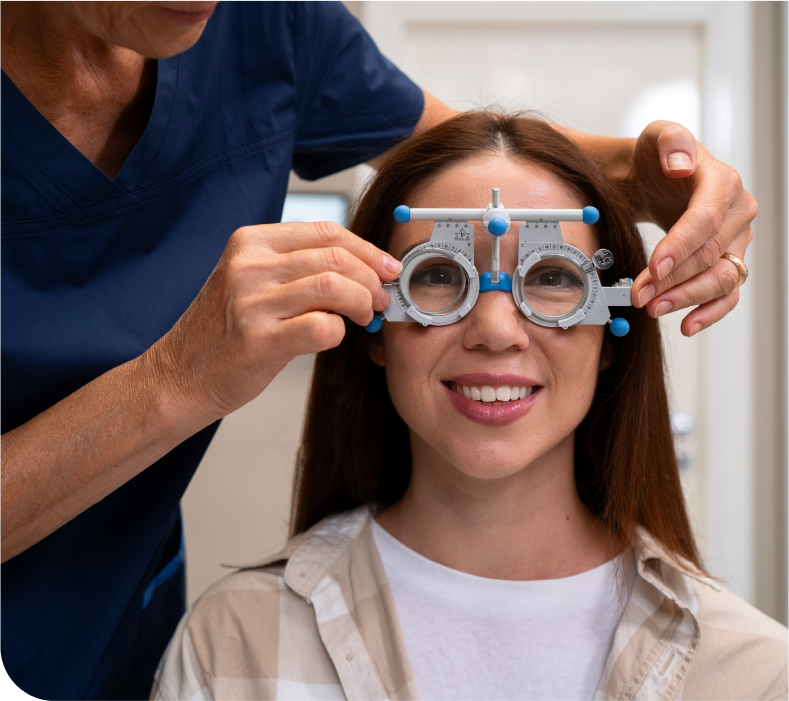
CATARACT SERVICE
Cataract is a dense cloudy area that forms in the otherwise clear lens of the eye. They cause visual disturbances ranging from mild glare to total blindness. Cataracts usually develop in eldery individuals but are not uncommon in the young. They can also occur due to prolonged use of certain medicines, long standing eye or systemic disease or after injury to the eye. They can also occur in children at birth or develop later during the first few years of birth
Age related cataract may initially be corrected to some extent by spectacles but surgery is the only cure. Cataract surgery is not only one of the most commonly performed surgical procedure in the world but is also the surgery with one of the highest success rates. It is low risk, fast and highly effective. However, the longer you wait to have cataract surgery, the most likely is that you can experience some setbacks. It is important to get a correct diagnosis and advise regarding cataract and the timing of surgery.
At Nayana Eye Care, you get a comprehensive eye examination which is necessary to assess the cataract and our highly qualified and experienced surgeons will guide you to get the best possible visual outcome with the latest techniques and technology.

TECHNIQUES
This technology uses ultrasound energy to break the cataract in to multiple small pieces inside the eye so that they can be removed through a very small incision (2.8 mm). This is the preferred technique to deal with cataracts worldwide. The advantages are
- It doesn’t produce a scar
- It doesn’t require a stitch
- It is a totally bloodless surgery and is safe to perform on people using blood thinners for heart conditions
- Surgery is done inside a closed chamber
- A very small incision leads to minimal or no post-operative astigmatism reducing the dependency on glasses for distance vision
- Patient will have a choice to choose modern IOLs to get the desired visual outcome
MICS
Micro incision cataract surgery is a term often used if phacoemulsification is performed in a 2.2 mm incision. Modern foldable IOLs can be implanted in to the eye with incisions as small as 2.2 mm, resulting in negligible post-operative astigmatism and exception visual outcomes
SICS
Small incision cataract surgery or SICS is a technique which doesn’t require use of any automated machinery. It is a manual procedure where the cataract is delivered outside the eye as a whole without breaking it in to smaller pieces. It requires an incison size of 6 mm or larger and is widely performed, especially in advanced mature cataracts or complicated cataracts. It produces
CHOICES OF IOLS
In today’s era the ageing population continues to work, stay active later in life. Therefore their need for quality vision at both distance and near is also growing. The cataract surgery has transitioned from restoring vision to offering spectacle independence.
Types of vision needed in daily life
- Distance vision: Watching TV, reading subtitles, reading sign boards, driving
- Near vision: Reading newspaper and books, reading on mobile devices or tablets, doing needle or craft work, reading price tags
- Intermediate vision: Working on computers or laptops, cooking, eating, playing chess or cards, using stairs or walking on uneven surfaces
MONOFOCAL IOLS
The most common type of lens used with cataract surgery is called a monofocal IOL. It has one focusing distance. It is set to focus for distance vision. Those who opt for these lenses have good distance vision but will have to wear eyeglasses for near and intermediate vision
BIFOCAL IOLS
Bifocal IOLs have different zones on their surface that will help to provide good vision for both distance and near. They may need glasses to view intermediate vision clearly
TRIFOCAL IOLS
Trifocal IOLs can offer spectacle independence for distance, near and intermediate vision.
TORIC IOLS
For people with astigmatism, there is an IOL called Toric IOL. Astigmatism is a refractive error caused by an uneven curve on the cornea. The toric IOL is designed to correct that irregularity on the cornea so that post-operatively glasses would not be required. Toric IOLs are available in all the three above segments (Monofocal, Bifocal and Trifocal).
Book an Appointment
Have any questions or feedback, Feel free to reach out to us. We always available to help




